Durable Textile Dyeing/Printing Using Natural Indigo Dyes and Leaves, and Mayan-Inspired Blue Indigo Pigments
Abstract
1. Introduction
2. Materials and Methods
2.1. Materials
2.1.1. Fabrics
2.1.2. Indigo Dyes, Pigments and Leaves Used
- -
- Indigo 1: Indigofera suffruticosa. Crops under organic conditions in Central America. Artisanal and fair trade production.
- -
- Indigo 2: Indigofera Tinctoria L species. Artisanal production in India.
- -
- Indigo 3: Persicaria tinctoria (Aiton) Spach species = Polygonum tinctorium Aiton. Indigo of Renouée des teinturiers. Organic crops and artisanal production in Provence by Laura and Amandine (Le Champ des Couleurs).
2.1.3. Other Chemicals Used
2.2. Methods for Dyeing and Printing Textiles with Dyes, Powdered Leaves and Pigments
2.2.1. Dyeing Fabrics with Exhaustion Method and Tie-Dye Technique Using the Three Natural Blue Indigo Dyes from GREEN’ING
2.2.2. Dyeing with Powdered Green Leaves from Indigofera Tinctoria (From AROMA ZONE)
2.2.3. Dyeing and Printing with Mayan Indigo-Based Pigments in Powdered Form, or in Paste Form with Glycerin
2.3. Characterization of Dyed and Printed Fabrics
2.3.1. Washing Test
2.3.2. Rubbing Test
2.3.3. Light Fastness
2.3.4. Antibacterial Tests in Natural Dye Powders and on Dyed Fabrics Using Agar Diffusion Test (NF ISO20645:2004) [18]
3. Results and Discussion
3.1. Dyeing with Blue Indigo Dyes
3.1.1. Spectral Analysis of Reduced Blue Indigo Dyes
3.1.2. Results of Textile Dyeing with the Three Blue Indigo Dye from GREEN’ING at 50 °C
3.1.3. Antibacterial Inhibition Activity
3.1.4. Wash, Rub, and Light Fastness of the Dyed Samples
3.2. Dyeing Fabrics with Indigo Leaves
3.3. Printing with Mayan Blue Pigments
3.3.1. Optimizing Water-Based Binder Content for Mayan Blue Pigment Dyeing Formulation Applied by Padding Using Pigment/Glycerin Paste
Optimizing Water-Based Biosourced Binder APPRETAN NTR@6553 for Pigment Printing
3.3.2. Screen Printing Using (a) Mayan Indigo Pigment/Glycerin Mix and (b) the Mayan Indigo Pigment Powder
4. Final Discussion and Conclusions
Author Contributions
Funding
Institutional Review Board Statement
Informed Consent Statement
Data Availability Statement
Acknowledgments
Conflicts of Interest
References
- Prasad, R. Indigo—The Crop that Created History and then Itself Became History. Indian J. Hist. Sci. 2018, 53, 296–301. [Google Scholar] [CrossRef]
- Grazia, C.; Buti, D.; Amat, A.; Rosi, F.; Romani, A.; Domenici, D.; Sgamellotti, A.; Miliani, C. Shades of blue: Non-invasive spectroscopic investigations of Maya blue pigments. From laboratory mock-ups to Mesoamerican codices. Heritage Sci. 2020, 8, 1. [Google Scholar] [CrossRef]
- Paul, R.; Blackburn, R.S.; Bechtold, T. Indigo and Indigo Colorants; Wiley: Hoboken, NJ, USA, 2021. [Google Scholar] [CrossRef]
- Manian, A.P.; Mueller, S.; Bechtold, T.; Pham, T. Quantification of indigo on denim textiles as basis for jeans recycling. Dye. Pigment. 2023, 216, 111327. [Google Scholar] [CrossRef]
- Cordin, M.; Bechtold, T.; Pham, T. Quantification of aniline and N-methylaniline in indigo. Sci. Rep. 2021, 11, 21135. [Google Scholar] [CrossRef] [PubMed]
- Saikhao, L.; Setthayanond, J.; Karpkird, T.; Bechtold, T.; Suwanruji, P. Green reducing agents for indigo dyeing on cotton fabrics. J. Clean. Prod. 2018, 197, 106–113. [Google Scholar] [CrossRef]
- Ben Ticha, M.; Meksi, N.; Drira, N.; Kechida, M.; Mhenni, M. A promising route to dye cotton by indigo with an ecological exhaustion process: A dyeing process optimization based on a response surface methodology. Ind. Crop. Prod. 2013, 46, 350–358. [Google Scholar] [CrossRef]
- Bechtold, T.; Burtscher, E.; Kühnel, G.; Bobleter, O. Electrochemical reduction processes in indigo dyeing. J. Soc. Dye. Colour. 1997, 113, 135–144. [Google Scholar] [CrossRef]
- Hoque, E.; Acharya, S.; Shamshina, J.; Abidi, N. Review of foam applications on cotton textiles. Text. Res. J. 2023, 93, 486–501. [Google Scholar] [CrossRef]
- Yang, Q.Y.; Zhang, T.; He, Y.N.; Huang, S.J.; Deng, X.; Han, L.; Xie, C.G. From natural dye to herbal medicine: A systematic review of chemical constituents, pharmacological effects and clinical applications of indigo naturalis. Chin. Med. 2020, 15, 127. [Google Scholar] [CrossRef]
- Ju, Z.; Sun, J.; Liu, Y. Molecular Structures and Spectral Properties of Natural Indigo and Indirubin: Experimental and DFT Studies. Molecules 2019, 24, 3831. [Google Scholar] [CrossRef]
- Alagbe, J. Chemical Evaluation of Proximate, Vitamin and Amino Acid Profile of Leaf, Stem Bark and Root of Indigofera Tinctoria. Biomed. Res. Clin. Rev. 2021, 3, 1–6. [Google Scholar] [CrossRef]
- Yoo, W.; Ahn, C. Dyeing Behavior of Silk Dyed with Indigo Leaf Powder Using Reduction and Nonreduction Dyeing and Its Relationship with the Amount of Indigotin and Indirubin Adsorbed in Silk. J. Korean Soc. Cloth. Text. 2019, 43, 753–767. [Google Scholar] [CrossRef]
- Kataoka, M.; Hirata, K.; Kunikata, T.; Ushio, S.; Iwaki, K.; Ohashi, K.; Ikeda, M.; Kurimoto, M. Antibacterial action of tryptanthrin and kaempferol, isolated from the indigo plant (Polygonum tinctorium Lour.), against Helicobacter pylori-infected Mongolian gerbils. J. Gastroenterol. 2001, 36, 5–9. [Google Scholar] [CrossRef] [PubMed]
- del Río, M.S.; García-Romero, E. The Maya Blue pigment. In Developments in Palygorskite-Sepiolite Research; A New Outlook on these Nanomaterials; Elsevier: Amsterdam, The Nederland, 2011; Volume 3. [Google Scholar]
- Ovarlez, S.; Giulieri, F.; Delamare, F.; Sbirrazzuoli, N.; Chaze, A.-M. Indigo–sepiolite nanohybrids: Temperature-dependent synthesis of two complexes and comparison with indigo–palygorskite systems. Microporous Mesoporous Mater. 2011, 142, 371–380. [Google Scholar] [CrossRef]
- ISO (International ISO standards) Distributed by AFNOR Publishing, France. Available online: https://www.iso.org/search.html (accessed on 1 July 2023).
- Volle, N.; Giulieri, F.; Burr, A.; Pagnotta, S.; Chaze, A.M. Controlled interactions between silanol groups at the surface of sepiolite and an acrylate matrix: Consequences on the thermal and mechanical properties. Mater. Chem. Phys. 2012, 134, 417–424. [Google Scholar] [CrossRef]
- Rondão, R.; de Melo, J.S.S.; Bonifácio, V.D.B.; Melo, M.J. Dehydroindigo, the Forgotten Indigo and Its Contribution to the Color of Maya Blue. J. Phys. Chem. A 2010, 114, 1699–1708. [Google Scholar] [CrossRef]
- Borisova, A. Study of print paste composition for natural and synthetic textiles. Part 2: Printing of polyester fabrics. IOP Conf. Ser. Mater. Sci. Eng. 2019, 500, 012029. [Google Scholar]
- Yang, M.-C.; Tsai, H.-Y. Ethylene Glycol and Glycerin as the Solvent for Alkaline Treatment of Poly(ethylene Terephthalate) Fabrics. Text. Res. J. 1997, 67, 760–766. [Google Scholar] [CrossRef]
- Pawar, S.S.; Maiti, S.; Biranje, S.; Kulkarni, K.; Adivarekar, R.V. A novel green approach for dyeing polyester using glycerine based eutectic solvent as a dyeing medium. Heliyon 2019, 5, e01606. [Google Scholar] [CrossRef]
- Safaei, H.R.; Shekouhy, M.; Rahmanpur, S.; Shirinfeshan, A. Glycerol as a biodegradable and reusable promoting medium for the catalyst-free one-pot three component synthesis of 4H-pyrans. Green Chem. 2012, 14, 1696–1704. [Google Scholar] [CrossRef]
- Chol, C.G.; Dhabhai, R.; Dalai, A.K.; Reaney, M. Purification of crude glycerol derived from biodiesel production process: Experimental studies and techno-economic analyses. Fuel Process. Technol. 2018, 178, 78–87. [Google Scholar] [CrossRef]

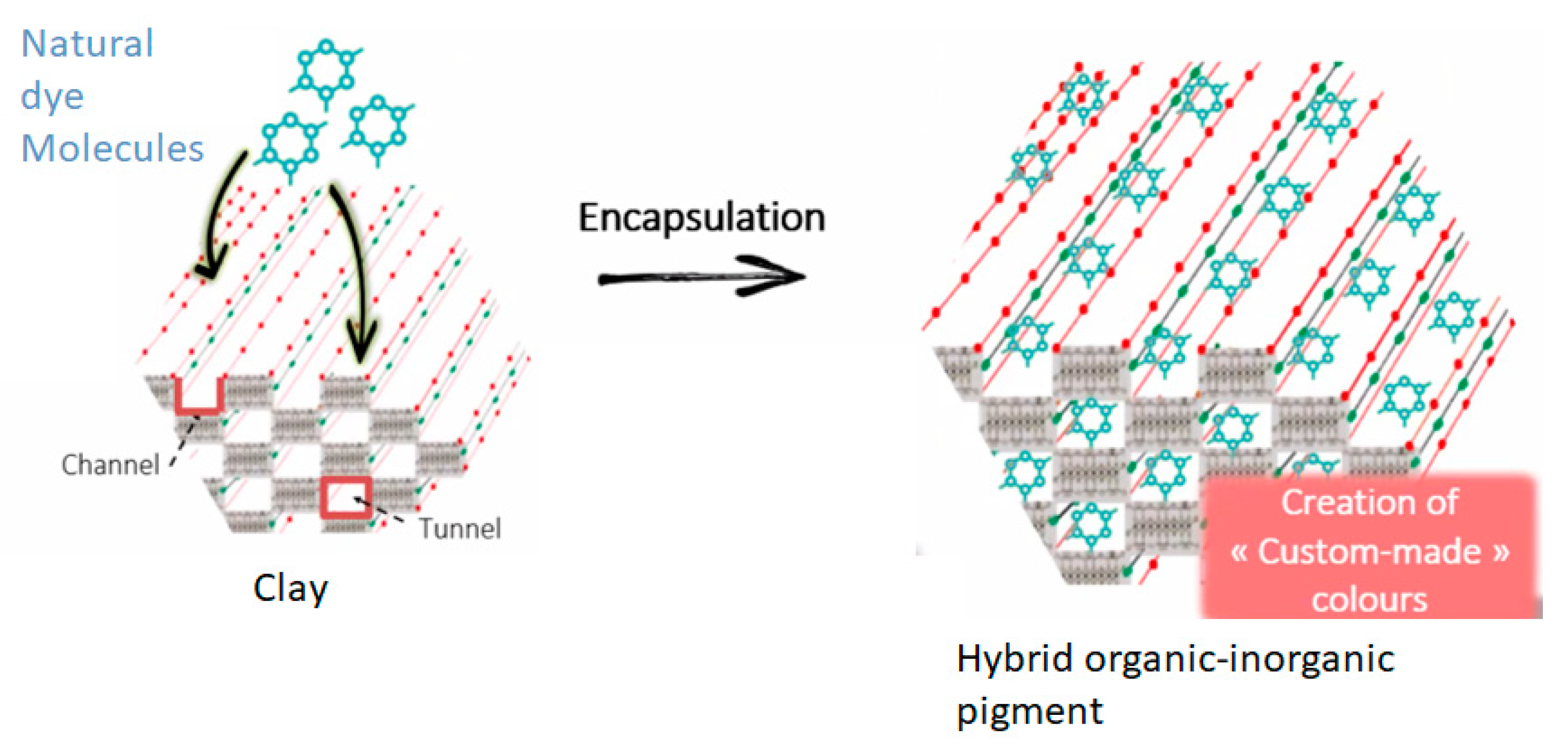
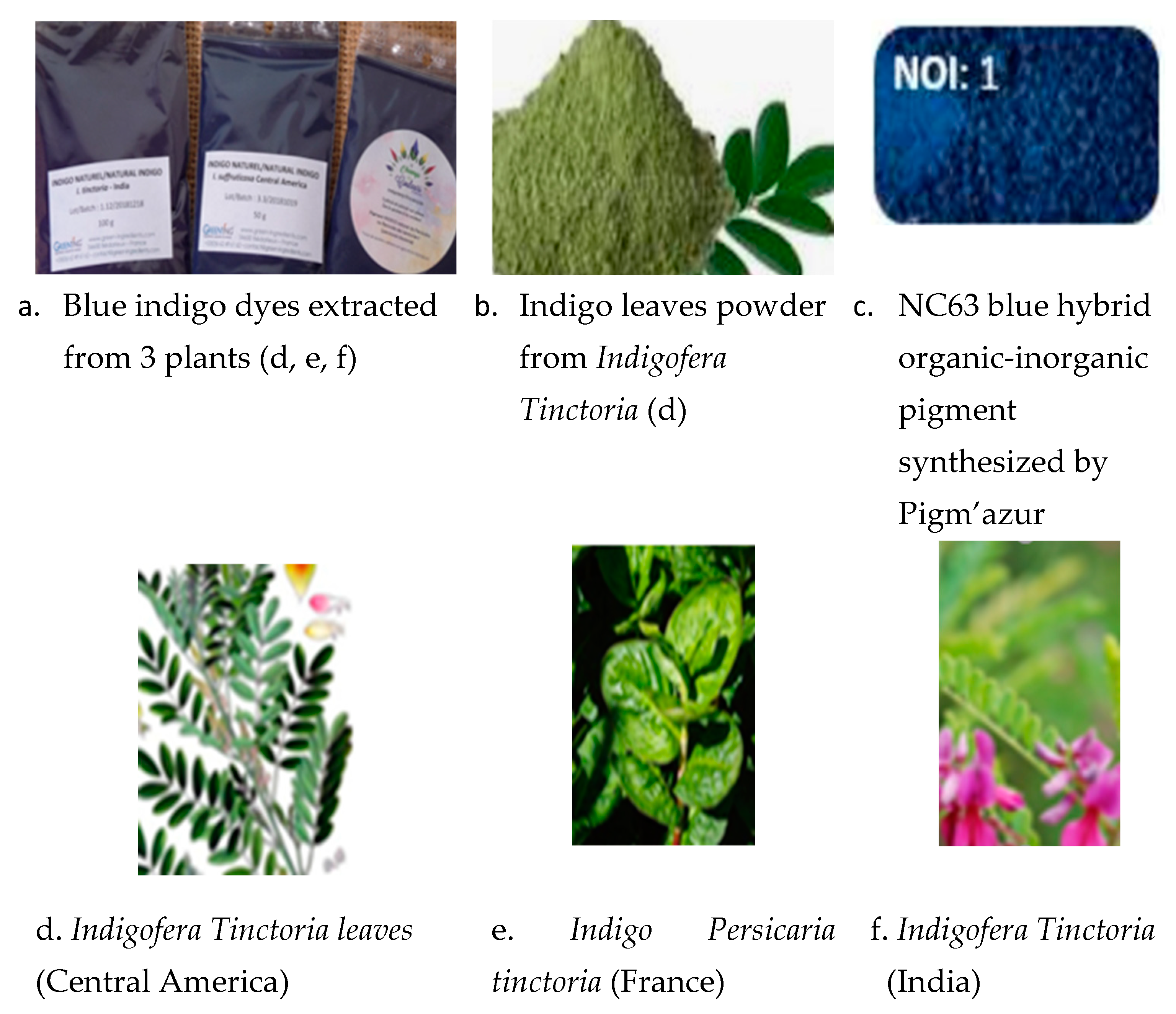
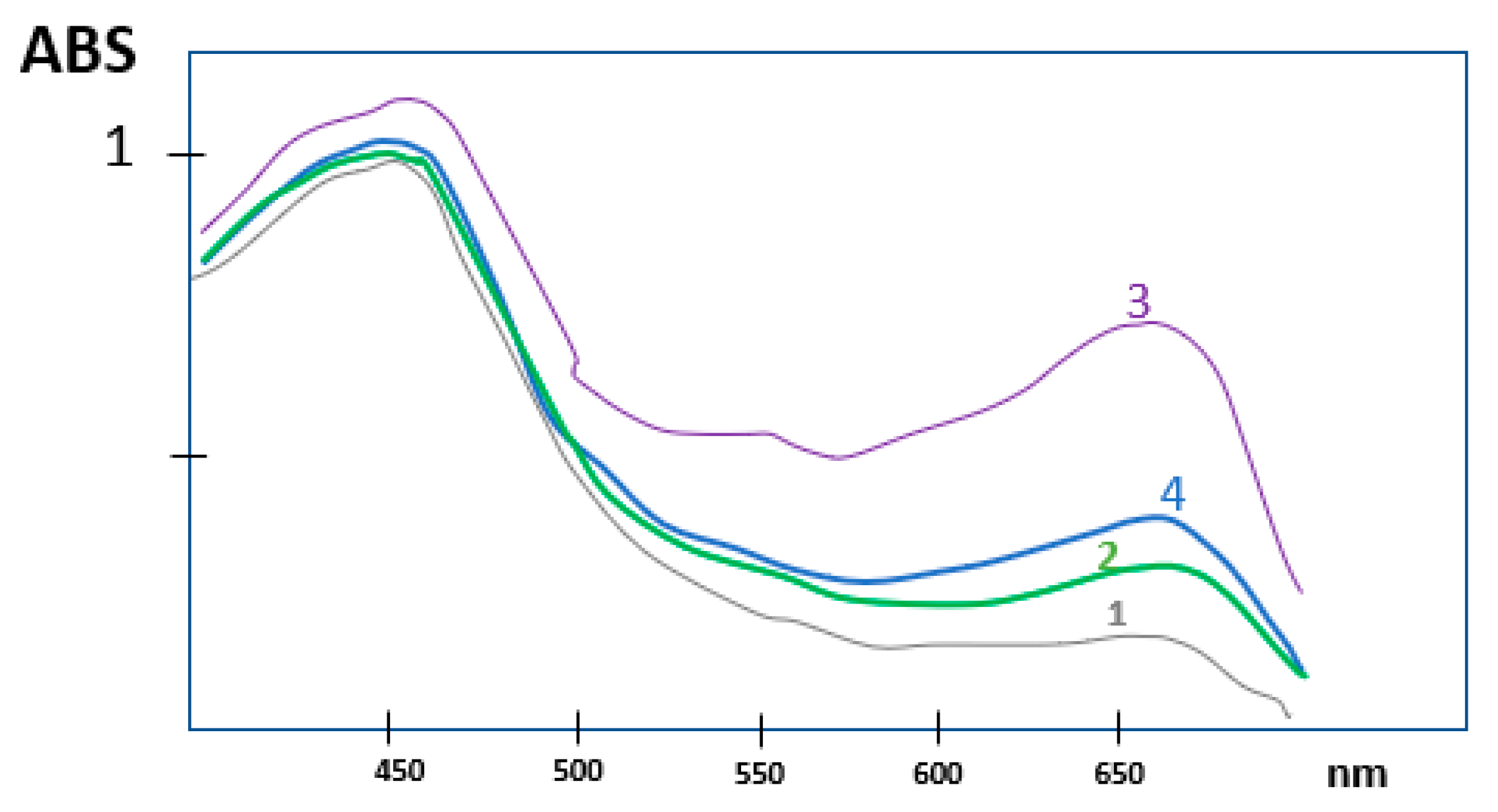
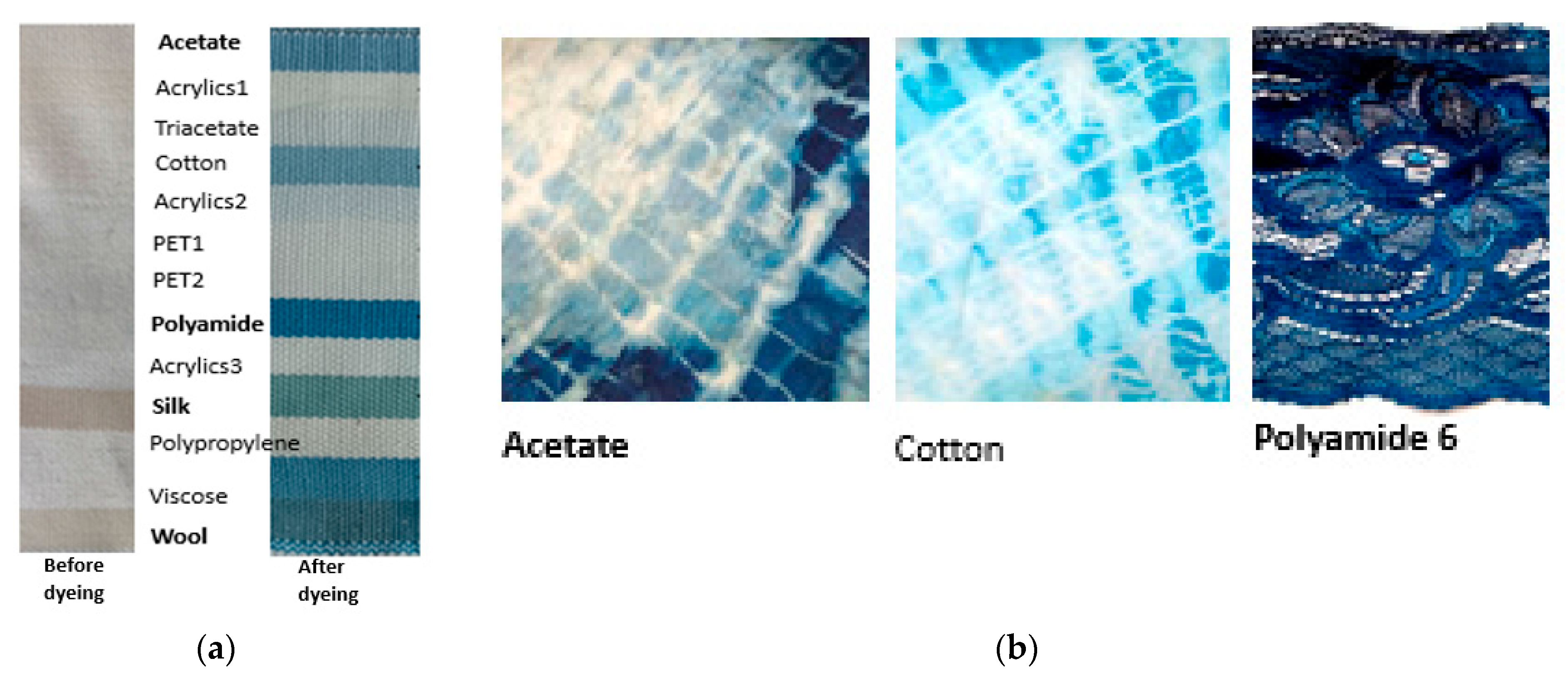

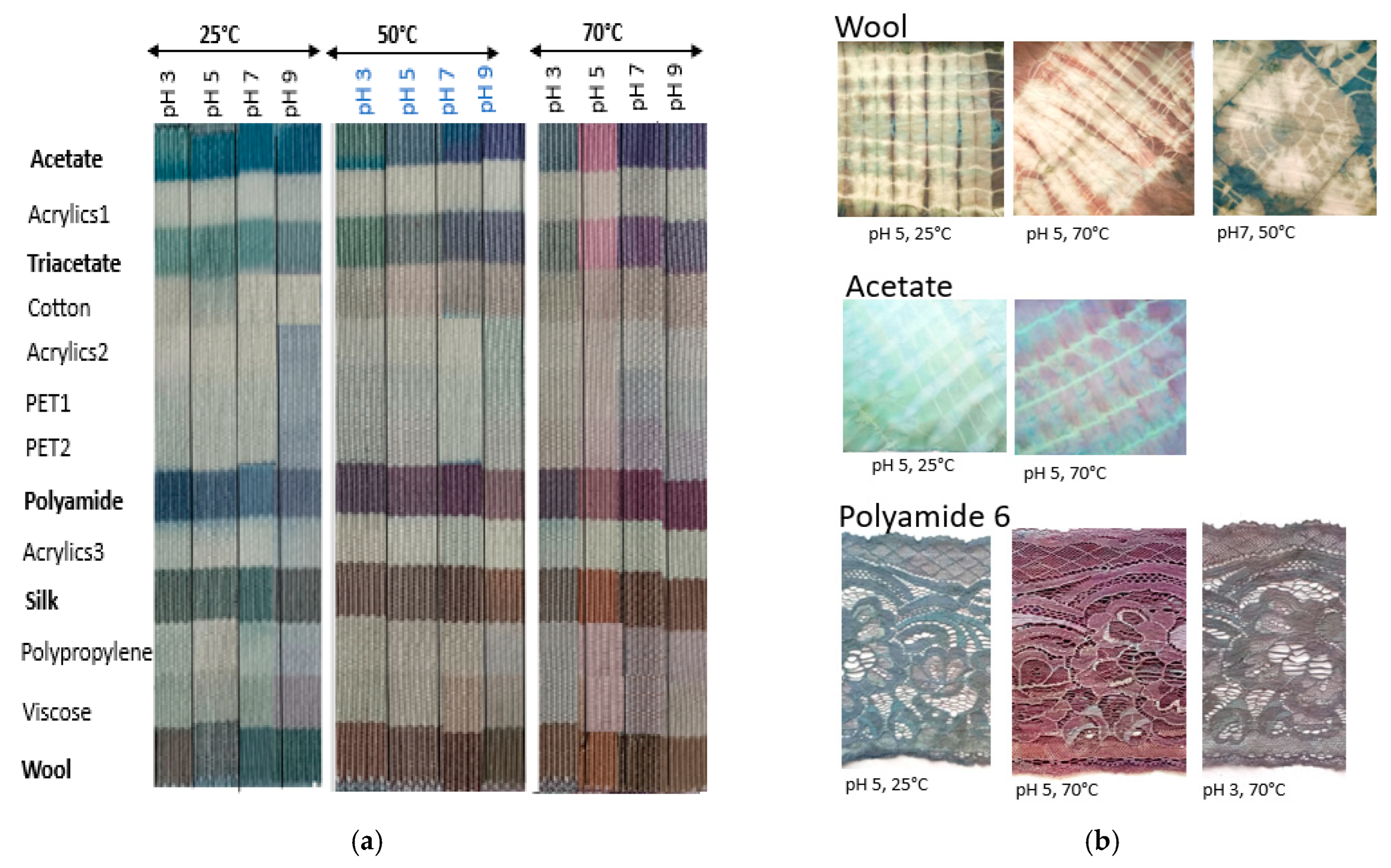
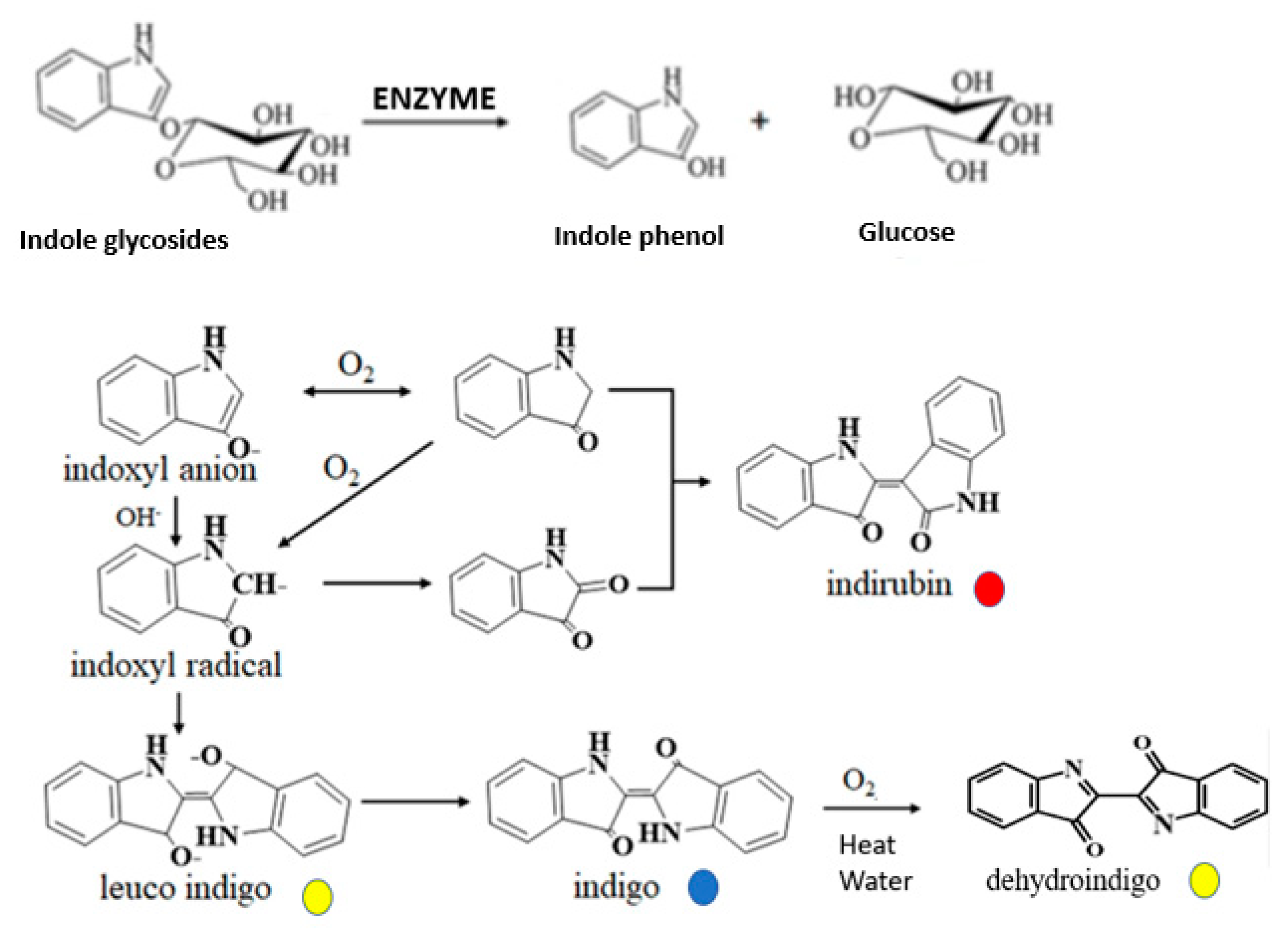
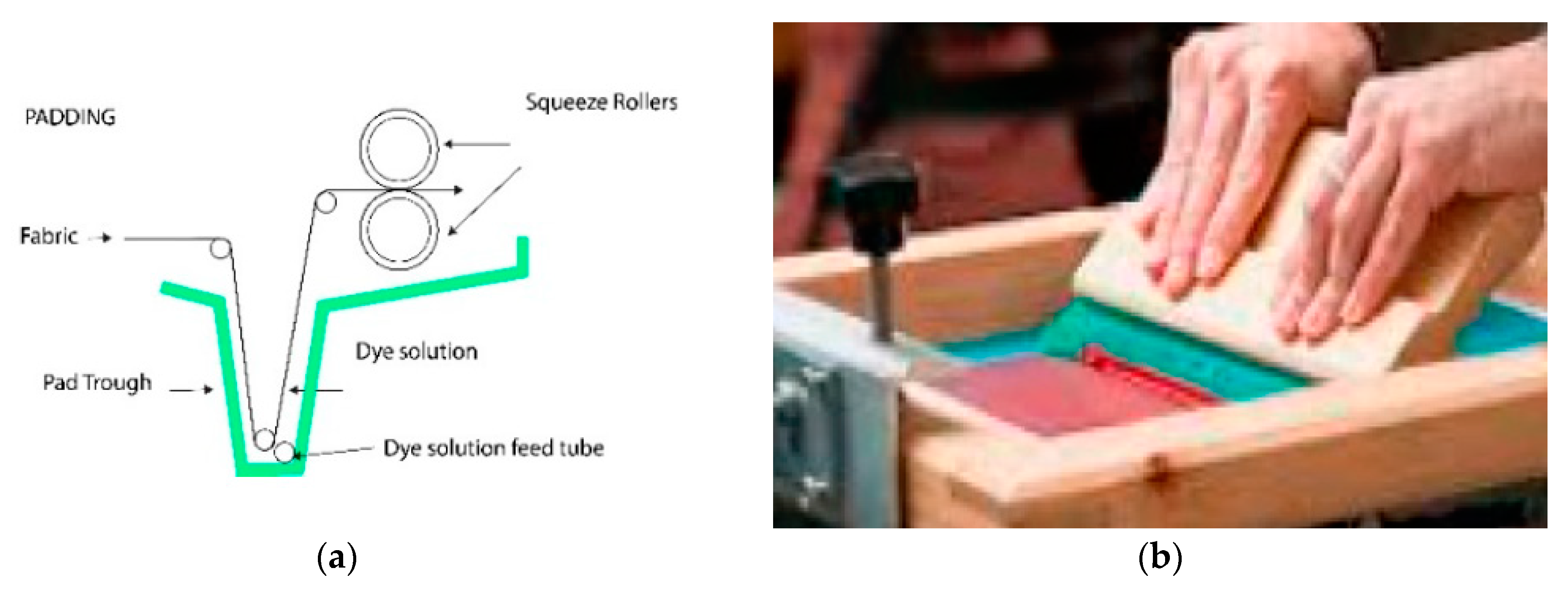
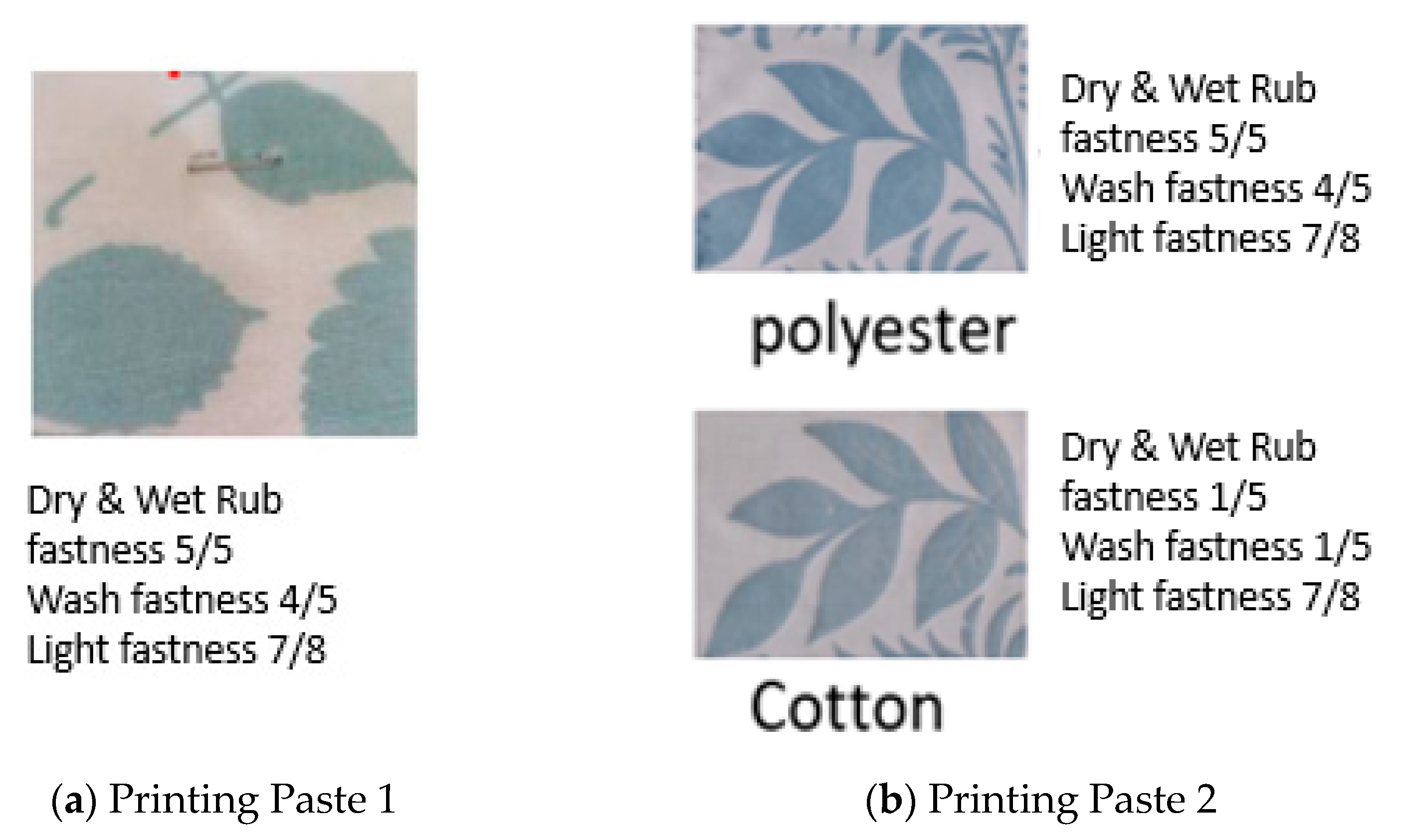

| Nature Fiber | Dye | Rub/5 | Wash Fastness/5 | Light Fastness/8 | |||
|---|---|---|---|---|---|---|---|
| Dry | Wet | 1 | 2 | 3 | |||
PA-11 | Blue Indigo dye from Indigofera Tinctoria | 4 | 3 | 5 | 5 | 5 | 5 |
Cotton | Blue Indigo dye from Indigofera Tinctoria | 3 | 2/3 | 5 | 5 | 5 | 5 |
PA-11 | Indigo leaves powder from Indigofera Tinctoria at 70 °C | 4 | 4 | 4 | 4 | 4 | 5 |
| Dicrylan Huntsman Chemicals | APPRETAN N96100 | APPRETAN N92111 | APPRETAN NTR@6553 30% Renewable Material |
|---|---|---|---|
| Soft polyurethane | Acrylic copolymers | Acrylic copolymer | Aqueous styrene–acrylic-type polymer dispersion (biocide- and formaldehyde-free) |
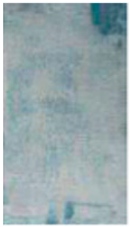 | 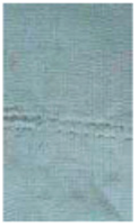 | 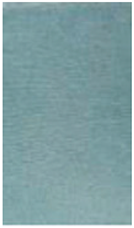 | 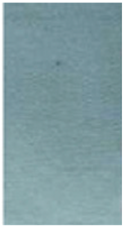 |
| Indigo pigment dyeing of cotton fabric using padding process with 4 different water-based binders | |||
| APPRETAN NTR@6553 Concentration | 40 g/L | 60 g/L | 80 g/L | 100 g/L |
|---|---|---|---|---|
| Wash fastness (40 °C)/5 | 2–3 | 4 | 4 | 4 |
| Dry rub fastness/5 | 5 | 5 | 5 | 5 |
| Wet rub fastness/5 | 4 | 4 | 4 | 4 |
| Cross-Linking Temperature for APPRETAN NTR@6553 | 150 °C | 180 °C (60 s) | |
|---|---|---|---|
| 60 s | 90 s | ||
| Wash fastness | 4 | 4 | 4 |
| Dry rub fastness | 5 | 5 | 5 |
| Wet rub fastness | 4 | 4–5 | 4–5 |
| Composition (g/Kg) | Printing Paste 1 | Printing Paste 2 | Printing Paste 3 | Printing Paste 4 |
|---|---|---|---|---|
| Mayan Indigo Pigment powder | / | / | 42 | 140 |
| Mayan Indigo pigment/Glycerin paste | 100 | 250 | / | / |
| Alginate paste 8% | 840 | 700 | 175 | 0 |
| Glycerin | / | / | / | 255 |
| APPRETAN NTR@6553 | 60 | 50 | 436 | 372 |
| Water | / | / | 347 | 233 |
Disclaimer/Publisher’s Note: The statements, opinions and data contained in all publications are solely those of the individual author(s) and contributor(s) and not of MDPI and/or the editor(s). MDPI and/or the editor(s) disclaim responsibility for any injury to people or property resulting from any ideas, methods, instructions or products referred to in the content. |
© 2025 by the authors. Licensee MDPI, Basel, Switzerland. This article is an open access article distributed under the terms and conditions of the Creative Commons Attribution (CC BY) license (https://creativecommons.org/licenses/by/4.0/).
Share and Cite
Behary, N.; Volle, N. Durable Textile Dyeing/Printing Using Natural Indigo Dyes and Leaves, and Mayan-Inspired Blue Indigo Pigments. Colorants 2025, 4, 2. https://doi.org/10.3390/colorants4010002
Behary N, Volle N. Durable Textile Dyeing/Printing Using Natural Indigo Dyes and Leaves, and Mayan-Inspired Blue Indigo Pigments. Colorants. 2025; 4(1):2. https://doi.org/10.3390/colorants4010002
Chicago/Turabian StyleBehary, Nemeshwaree, and Nicolas Volle. 2025. "Durable Textile Dyeing/Printing Using Natural Indigo Dyes and Leaves, and Mayan-Inspired Blue Indigo Pigments" Colorants 4, no. 1: 2. https://doi.org/10.3390/colorants4010002
APA StyleBehary, N., & Volle, N. (2025). Durable Textile Dyeing/Printing Using Natural Indigo Dyes and Leaves, and Mayan-Inspired Blue Indigo Pigments. Colorants, 4(1), 2. https://doi.org/10.3390/colorants4010002







